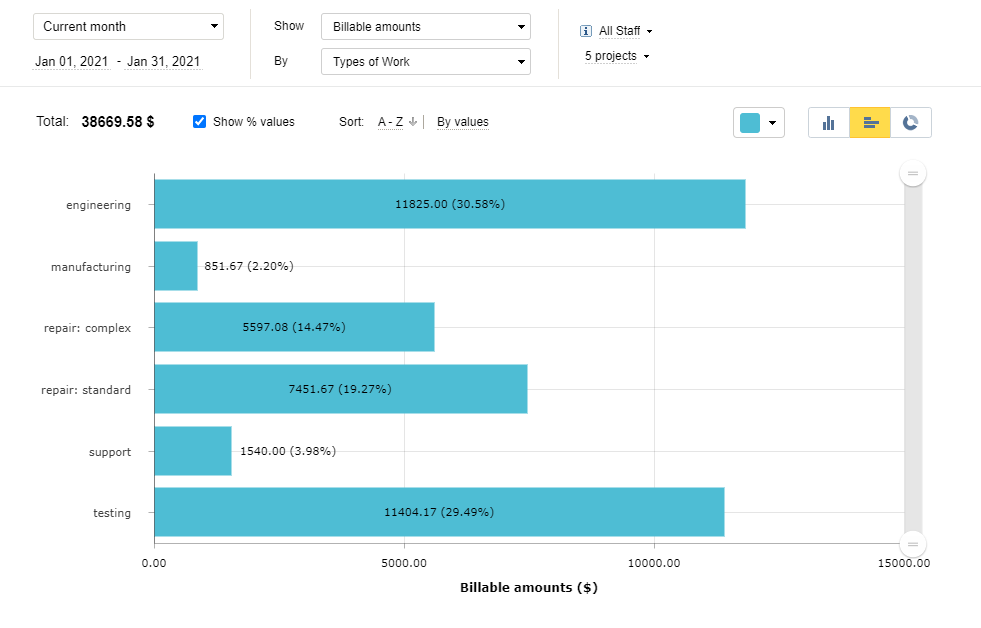
Day after day, business owners make countless decisions with an aim to attain desired performance goals in a way that satisfies their current business needs and interests just perfectly. Business decision management requires a rigorous approach and reference to quality evidence. And while there are many credible sources that can supply a business with that necessary data, time tracking is among the most insightful among them.
As correctly put by Timely on their Memory Blog:
“Time tracking is no longer just a measurement of profitability;
it’s a means of discovering exactly how we work, where we struggle,
how we misuse time, and how our behaviours both serve and distract us.”
In other words, a time tracker can show you how much money you lose and earn on a daily basis. But besides, it can help you see how productive you are and whether you succeed in meeting your work objectives or not.
Hence, you may utilize time tracking data to decide on:
- Operational efficiency | How to arrange your day-to-day operations in order to achieve better outputs?
- Cost efficiency and profitability | How to reduce work-related costs while increasing the revenues?
- Project and business planning | How to set realistic performance goals and which direction to move further?
Below we discussed these three decision-making topics in some detail and explained how time tracking might assist in analyzing them. But first, let’s find out what business decision management is and which process can help you make high-quality decisions.
What Is Business Decision-Making?
Business decision-making is a step-by-step process used by an individual manager or a management team to identify the best solution to a particular problem or choose an optimal course of action toward a specific goal.
The 7-Step Business Decision Management Process
To arrive at the right business decision, one needs to complete the following steps:
- Identify the problem
- Gather evidence
- Identify the alternatives
- Evaluate each alternative
- Choose the optimal option
- Take action
- Assess decision results
The above steps indicate that time tracking is only of any value in business decision management if used purposefully. Hence, prior to reviewing the data, make sure you understand which problem you want to solve. With a decision-making goal in mind, you have a much better chance to benefit from the analysis of time tracking reports.
How Does Time Tracking Data Help Improve Business Decision Management?
1. Assess operational efficiency to increase productivity
There are many things that can hinder a team’s work progress and make it less efficient:
- Multitasking
- Excessive workloads
- Various workplace distractions
- Too many unnecessary meetings and communications
- Lack of employee motivation, etc.
But whatever the thing is wasting your businesses’ resources and makes it insufficiently productive, time tracking will help you identify and address it with greater ease.
To go about this task, you may either check how many performance objectives you met within a certain period or evaluate your team’s productivity trends. We described the way to do so in this comprehensive post. But in short, you just need to:
- Define measurable productivity goals,
- Set estimates and deadlines for your tasks,
- Encourage your employees to track working hours regularly,
- And then run detailed reports to compare actual work results with your expectations.
If the reports show that your performance wasn’t successful (e.g., your team missed a few deadlines and spent too much time on some insignificant tasks), get more information on why that happened. Further analysis will let you detect your time wasters and, afterward, undertake the necessary measures for improvements.
2. Reduce costs and boost profitability
Just like in the case of operational efficiency, we may judge how well we dispose of our financial resources by analyzing the use of time. For instance, if your team spends too many hours on routine issues and simple tasks or delays important work while correcting mistakes, your business is bound to incur much more costs than necessary.
But expenses are merely one side of the medal. Revenues are also an intrinsic part of any company’s financial health. And suppose you’re constantly over-servicing your clients, investing too much effort into work that brings small profit, or charging too little for a massive heap of complex tasks. In that case, you also lose money that belongs to you.
So, what to do if you feel like cost efficiency and profitability could be improved in your business? Run a time tracking report! But before that, be sure to set your current billing and cost of work rates in the time tracker.
The info about these rates is necessary for a piece of software to keep a record of all your billable time and workforce expenses. Typically, businesses use this data to generate invoices and calculate payroll. But besides, you may apply them to compare your actual financial performance with your expectations.
For example, imagine that your cost and billing report reveals unsatisfactory expenditure and revenue results. In that case, you will locate the tasks and projects that consumed too much time or brought less money than you wanted. Next, you will analyze them further to grasp the exact reasons for poor performance. Knowing all the whys of the problem, you’ll eventually come up with the right decision for improvement.

3. Build manageable plans and attain your goals
To make plans work and maximize chances for success in delivering on your objectives, you need to have two basic things: extensive management experience and credible data. While the former is entirely in your hands, the latter – as you might already guess – can be obtained with the help of time tracking.
Multifunctional time trackers like actiTIME collect many kinds of project information: resource allocation, workloads, estimate compliance, costs, billable time, employee absence and overtime, etc. Therefore, if you utilize a time tracking app to keep a record of data on project performance from the start till the end, you get a highly detailed picture of everything that went as planned or astray. Consequently, you can apply these historical data to inform your decision-making regarding future projects. And analyzing the completed projects in depth, you’ll be able to:
- Develop much more accurate time estimates for new work,
- Design realistic schedules and timelines,
- Improve workload management,
- Predict workforce capacities,
- And take appropriate measures to boost team productivity.
Moreover, historical data on project costs and billable time will show you whether a it’s worthwhile to undertake a similar endeavor in the future or whether it’s better to choose a different direction to go. This way, time tracking adds an extra insight on the matter of strategic planning and future investments.
Don’t forget that actiTIME is always ready to bring your business decision management to another level! Sing up for a free 30-day trial today to try the tool in action.

















































